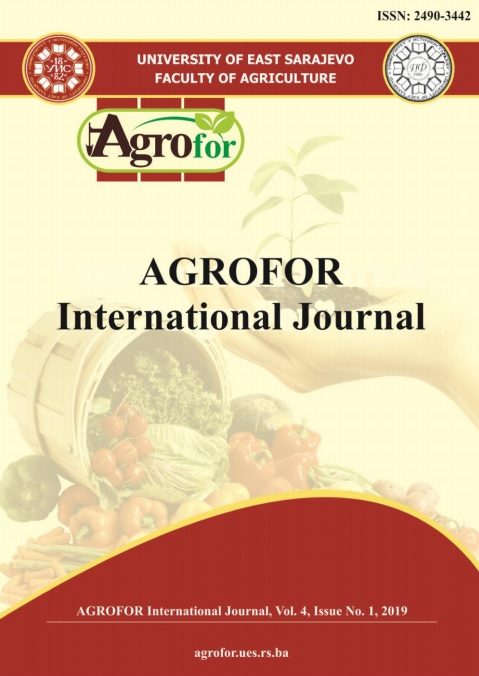EFFECTS OF CONTROLLED DRAINAGE ON SOIL WATER REGIME AND QUALITY IN LITHUANIA
DOI:
https://doi.org/10.7251/AGRENG1901119RAbstract
Lithuania remains one of the most extensively drained of the Baltic and Nordic
countries. The overall drained area (ditches plus tile drains) totalled 87% of the
agricultural land area. Many nutrients from soil are leached through drainage
resulting in polluting streams (drain flow receivers) water. Drain flow is treated as
a major determinant of water quality. Therefore, the reduction of nutrients entering
the drains is very important. Controlled drainage conception, when the outflow
height is increased at the mouth, helps reduce drainage runoff and partially purify
water. The aim of the research was to establish controlled drainage influence on the
soil moisture regime, nitrogen and phosphorus leaching. Investigations were
carried out in sandy loam and loam soils in the Middle Lithuanian Lowland. Based
on studies, several tendencies were observed: when drainage outflow began, the
amount of soil moisture in subsoil (50-80 cm layer of the soil) of controlled
drainage plot was higher than in the conventional drainage plot, and higher
moisture supplies stayed for a longer period of time. Controlled drainage had no
direct impact on phosphorus and nitrogen concentrations but they were influenced
by the leaching quantities of plant usable nutrients. The reason that in many cases
lower nitrate nitrogen (54% of all measurements) and phosphorus concentrations
(77% of all measurements) were found in the conventional system rather than in
the controlled drainage might be connected to the fact that the latter area contained
predominantly lighter textured soils (sandy loam) making it easier to wash away
the nutrients unused by plant.

